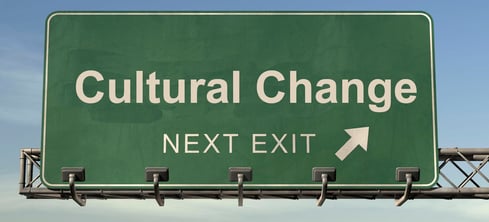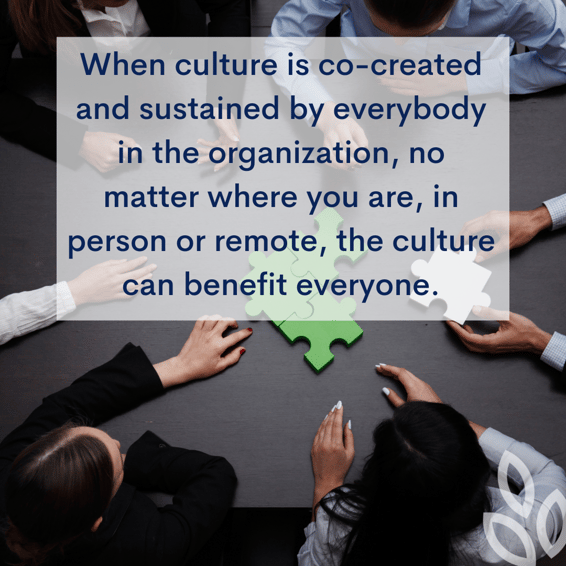The topic of the year - Culture in the hybrid world.
This has been an interesting topic to discuss with literally everyone in the workplace. You will hear a diverse amount of views and attitudes on this topic from how this affects productivity, communication, collaboration, and the big one, culture.
All these items are now up for debate for almost every company that I speak to and most of them are really trying to grasp how a company thinks about its culture with hybrid work. What does it actually mean and look like in this format?

Well, the first thing that has happened is it has pushed leaders to rethink the purpose and nature of 'office culture.' Asking themselves, is it essential to be in-person to have a thriving culture or can it be replicated remotely? What would this look like without being in the office together?
Leaders on one hand feel this need to bring people back into the office, but speaking to employees, many of them feel this relief from the constant commutes and office politics. On the other hand, many fear losing what came from a shared workplace like personal connections and bonds that are built on interactions with colleagues throughout the day. And when it comes to gaining promotions and moving up the ladder, remote employees fear that leaders would prefer those who are physically close over those who are distant - regardless of performance metrics.
This is an important moment to reevaluate what we really want and expect from our company cultures and what it looks like without a central location. Many might be happy to trade away old cultural traditions like weekly happy hours and replace them with higher-quality interactions.
We led a recent culture design session with an executive team and one of the biggest concerns and comments I heard was that we cant build trust and connection without being in person. I find this to be an extremely limiting belief that many people have. The number one cultural component that I see leaders needing to master is forging strong connections with each other. Connections that are meaningful and intentional from the beginning. Managers need to learn how to take these new steps like facilitating a meeting in which everyone has a voice, can understand or be part of decisions, actively brainstorm on items going forward, and even being able to work in engaging events virtually.

Those that hang onto old routines and old ways of operating will find it quite difficult to engage the current talent that you have and even harder to attract new talent. Most employees and people out in the industry have been loud enough to voice their concerns and needs. It is expected that you listen and allow their voice to impact the culture and help define what norms and values should be reinforced.
So what should you start doing?
Leaders can start by becoming much more transparent in their goals and by making employees partners in creating the new culture and really listening to their input. Co-design this with your people and allow them to have a strong stake in the model going forward. This will ensure its design and implementation is impactful!
Employees can contribute by speaking up about what their values and needs are that allow them to thrive within the workplace. Things like relationships, meetings, communication, and inclusivity.

When culture is co-created and sustained by everybody in the organization, no matter where you are, in person or remote, the culture can benefit everyone.
This is also the culture that is going to actively engage and retain your people today, as well as attract the talent who are actively leaving the organizations not doing this.




